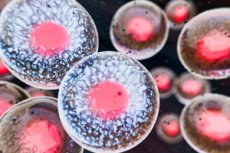New publications
Stem cells against Down syndrome and Alzheimer's disease: common targets and personalized approaches
Last reviewed: 09.08.2025

All iLive content is medically reviewed or fact checked to ensure as much factual accuracy as possible.
We have strict sourcing guidelines and only link to reputable media sites, academic research institutions and, whenever possible, medically peer reviewed studies. Note that the numbers in parentheses ([1], [2], etc.) are clickable links to these studies.
If you feel that any of our content is inaccurate, out-of-date, or otherwise questionable, please select it and press Ctrl + Enter.

Scientists from the Tohoku Medical Megabank Organization at Tohoku University (Japan) have published a comprehensive review of current and promising stem cell approaches to the treatment of Down syndrome (DS) and Alzheimer's disease (AD) in Stem Cell Research & Therapy. Despite their different etiologies — trisomy 21 in DS and age-dependent accumulation of β-amyloid and tau pathology in AD — both diseases are characterized by similar mechanisms of neuroinflammation, oxidative stress, and loss of synaptic connections, making them potential targets for cell therapies.
Sources of stem cells and their potential
Neural stem cells (NSCs). They are capable of differentiating into new neurons and astrocytes. In preclinical models of diabetes and AD, NSC transplantation resulted in
- restoration of the number of neurons in the hippocampus,
- improving learning and memory (improving performance in maze tests),
- reducing the level of proinflammatory cytokines (TNF-α, IL-1β) by 40–60%.
Mesenchymal stem cells (MSCs). Through the secretion of trophic factors (BDNF, GDNF) and exosomes, reduce neuroinflammation and stimulate endogenous neurogenesis. In models of Alzheimer's patients, they confirmed
- reduction of amyloid plaques by 30–50%,
- restoration of synaptic density (PSD95, Synaptophysin).
Induced pluripotent stem cells (iPSCs). Derived from cells of patients with diabetes or AD, they allow for custom-made disease modeling, testing of therapeutic interventions, and, potentially, the creation of auto-compatible transplants.
Embryonic stem cells (ESCs): With the highest plasticity, they remain a key source for basic research, although their clinical use is limited by ethical standards.
General therapeutic mechanisms
- Anti-amyloidogenic activity. MSC and NSC cells stimulate microglia and astrocytes to engulf β-amyloid, accelerating its removal from the parenchyma.
- Modulation of neuroinflammation. Secreted factors from MSCs reduce NLRP3 inflammasome activation and suppress the migration of proinflammatory astrocytes (A1 phenotype).
- Stimulation of endogenous neurogenesis. NSC and growth factors from MSC activate reserve neuronal progenitors in the subventricular zone and hippocampus.
- Antioxidant effect. MSC exosomes carry miRNA and proteins that increase the expression of antioxidant genes (NRF2, SOD2).
Stages of clinical development
Alzheimer's disease.
Early phase I/II clinical trials of MSC and NSC are ongoing, where the following have already been noted:
- a trend towards improvement in MMSE and ADAS-Cog cognitive tests by 10–15% after 6 months,
- reduction in the level of p-tau and β-amyloid in the cerebrospinal fluid.
Down syndrome.
- So far, limited to preclinical studies in mouse models, transplanted NSCs improve cognitive performance and reduce microglial hyperplasia.
- The first clinical pilot studies of MSC administration are planned to assess safety and impact on neurological functions.
Key Challenges and Future Directions
- Ethical and regulatory issues in the use of ESC and iPSC.
- Risk of tumors and immune rejection, especially with ESC.
- Standardization of protocols: dosage, route of delivery (intracerebrally, intrathecally), optimal time of intervention.
- Personalization of therapy: combining the patient's genetic information (e.g. APOE genotype in AD) and stem cell type for maximum effectiveness.
- Combination approaches: combining cell transplants with β-amyloid vaccination or τ-protein kinase inhibitors.
The review highlights that while Down syndrome and Alzheimer’s disease differ in cause, their neurodegenerative mechanisms overlap, and stem cells are emerging as a versatile tool for modulating them. “Transitioning from preclinical to clinical will require a concerted effort by neuroscientists, geneticists, and ethicists,” the authors conclude. “But the potential to change the course of these diseases is enormous.”
